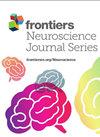Early hippocampal high-amplitude rhythmic spikes predict post-traumatic epilepsy in mice
IF 3.2
3区 医学
Q2 NEUROSCIENCES
引用次数: 0
Abstract
Oscillations, a highly conserved brain function across mammalian species, play a pivotal role in both brain physiology and pathology. Traumatic brain injury (TBI) frequently results in subacute and chronic alterations in brain oscillations, which are often associated with complications like post-traumatic epilepsy (PTE) in patients and animal models. We recently conducted longitudinal recordings of local field potential from the contralateral hippocampus of 12 strains of recombinant inbred Collaborative Cross (CC) mice and classical laboratory inbred C57BL/6 J mice after lateral fluid percussion injury. In this study, we profiled the acute (<12 h post-injury) and subacute (12–48 h post-injury) hippocampal oscillatory responses to TBI and evaluated their predictive value for PTE. We found dynamic high-amplitude rhythmic spikes with elevated power density and reduced signal complexity that prevailed exclusively during the acute phase in CC031 mice, which later developed PTE. This characteristic early brain oscillatory alteration was absent in CC031 sham controls, as well as in other CC strains and reference C57BL/6 J mice that did not develop PTE after TBI. Our findings offer quantitative measures linking early hippocampal brain oscillation to PTE at a population level in mice. These insights enhance understanding of circuit mechanisms and suggest potential targets for neuromodulatory intervention.早期海马高振幅节律性尖峰可预测小鼠创伤后癫痫的发生
振荡是哺乳动物中高度保守的大脑功能,在大脑生理学和病理学中都起着举足轻重的作用。创伤性脑损伤(TBI)经常导致大脑振荡的亚急性和慢性改变,这往往与患者和动物模型中的创伤后癫痫(PTE)等并发症有关。最近,我们对12个品系的重组近交合作杂交(CC)小鼠和经典实验室近交C57BL/6 J小鼠在侧向液体冲击伤后对侧海马的局部场电位进行了纵向记录。在这项研究中,我们分析了海马对创伤性脑损伤的急性(<伤后 12 h)和亚急性(伤后 12-48 h)振荡反应,并评估了它们对 PTE 的预测价值。我们发现,CC031 小鼠的动态高振幅节律性棘波具有功率密度升高和信号复杂性降低的特点,仅在急性期盛行,后来发展为 PTE。在 CC031 假对照组以及其他 CC 品系和参考 C57BL/6 J 小鼠中,这种早期脑振荡特征性改变均不存在,而这些小鼠在 TBI 后并未出现 PTE。我们的研究结果提供了在小鼠群体水平上将早期海马脑振荡与 PTE 联系起来的定量测量方法。这些见解加深了人们对电路机制的理解,并提出了神经调节干预的潜在目标。
本文章由计算机程序翻译,如有差异,请以英文原文为准。
求助全文
约1分钟内获得全文
求助全文
来源期刊

Frontiers in Neuroscience
NEUROSCIENCES-
CiteScore
6.20
自引率
4.70%
发文量
2070
审稿时长
14 weeks
期刊介绍:
Neural Technology is devoted to the convergence between neurobiology and quantum-, nano- and micro-sciences. In our vision, this interdisciplinary approach should go beyond the technological development of sophisticated methods and should contribute in generating a genuine change in our discipline.
 求助内容:
求助内容: 应助结果提醒方式:
应助结果提醒方式:


